Cecily Brown: An Appetite for Excess
“Painting is closest to poetry of all the arts: not being able to explain something, why does one thing sound so great next to another? You can’t put your finger on it, that’s what my work’s about.”
Cecily Brown’s paintings pulsate with fleshy indulgence as thickly painted bodies writhe into and over one another, caught in the heat of passion. Her wild, visceral and erotic language draws on the macho, male-dominated figurative expressionism of Francis Bacon, Wilhelm De Kooning and Jackson Pollock, but hers is a female gaze, shaped by her own internal and external experiences which are infused into delicious painterly fantasies. Chrissie Iles, Whitney Museum of American Art’s curator writes, “She’s rewritten the language of the erotic in painting from a female perspective.”
Brown’s upbringing undoubtedly shaped her future career as an artist; born in 1969 in Surrey, her mother was the novelist Shena Mackay and her father the art critic David Sylvester, an early champion and friend of British painter Francis Bacon. From as early as three years old Brown had already decided she wanted to become an artist. When she was 16, Brown studied an art course at Surrey’s Epsom School of Art and Design, before moving on to London’s Slade School of Art in the 1990s. By this stage she was already set on producing a conceptual brand of figurative painting, but slowly realised her ideas were out of sync with the rising trend for Conceptualism espoused by the YBAs. When the opportunity to spend six months on an exchange in the more painting-friendly New York came up, she was ready to go.
In comparison with London’s art scene, which she described as “not very friendly”, Brown found New York open and welcoming, particularly the hip SoHo area, which was, as she remembers, “alive with galleries, and there was loads of good art, stuff that I hadn’t seen before, like (Jeff) Koons, Richard Prince, and Mike Kelley. I couldn’t believe how much art there was everywhere.” She had fallen for New York and chose to permanently settle there in 1995, although her early years were by no means easy as she took on various odd jobs, including waitressing and working as a studio assistant for an animation company while trying to continue her artistic practice on the side. After finding a studio in the Meatpacking area of Manhattan, Brown was energised and prolific, often having around 20 paintings all on the go at the same time. Mixing the conceptual language from London with the lurid colours and free expressionism of American art allowed Brown to strike gold; her first solo show received rave reviews, revealing a series of huge rabbits engorging in explicitly detailed orgies as they dissolved into their surroundings, including the work Untitled, 1997.
In the next few years Brown’s imagery shifted towards the human body, with works such as Spree, 1998 and Suddenly Last Summer, 1999, describing fleshy forms with fluid, sensuous passages of paint swiped and streaked across her canvases. Graphic, sexual content is only partially revealed, as ambiguous naked forms become flurried passages of movement through space. Some works from this period, such as Bacchanal, 2001, recall classical and mythological scenes as human bodies are set amidst lush, fertile scenery, but traditional figure-ground relationships are broken apart into kaleidoscopic patterns of colour and movement. Other works are more graphic and confrontational, depicting scenes that could be lifted from pornographic material, featuring fetishized male bodies, such as Performance, 1999 and Boy Trouble, 1999.
Though her points of reference vary from these historical and contemporary sources, Brown has naturally developed a painterly language that evolves slowly on canvas, a series of improvised acts that build up over time on top of one another, investing multi-layered complexity into the single image, as she explains, “I have always wanted to make paintings that are impossible to walk past, paintings that grab and hold your attention. The more you look at them, the more satisfying they become for the viewer. The more time you give to the painting, the more you get back.”
Unlike many of her male predecessors who had tended to objectify the female body, even when seen through an abstracted lens, Brown’s paintings of men and women caught in motion seemed more concerned with conveying the body’s ephemeral sensations of pleasure and climax as abstract, indeterminate forces of nature, and the art world was hooked. Just two solo shows in, she quickly became labelled as a key player in the New York School of Painting along with John Currin and Lisa Yuskavage. By the tender age of 29, Brown had been scooped up by New York’s prestigious Gagosian Gallery and her paintings were selling in six figure sums.
As her stardom rose in the early 2000s and she developed a celebrity status, Brown was encouraged by the media to project a rebellious, sexualised public image, posing in scantily clad clothing while holding a cigarette or wearing a t-shirt emblazoned with a dollar sign on it. These images appeared on various high profile magazine covers, something for which she attracted as much criticism as praise. Looking back, she realised this persona may have hindered rather than helped her reputation, but she was quick to point out how her male contemporaries in the same position were treated differently from her by the media, saying in an interview, “John Currin was in half the same shoots as I was … and he never got roasted for it.” Public image and private life fell into one as she partied hard with her fellow artists, but attracted further controversy after being involved in a dramatic incident where a former boyfriend tried to slit her throat.
Since this time Brown’s lifestyle has gradually mellowed; she married architectural critic Nicolai Ouroussoff and had a daughter, although she admits it took a while to shake off her “bad girl” image, writing “I think it distracted people for a really long time.” The nude is still a mainstay in her practice, but recent works are less overtly sexual, instead referencing the epic complexity of history painting, another male-heavy genre; influences from William Hogarth and Eugene Delacroix have bled into her practice, as seen in her paintings Name that Tune, 2012 and Madrepora (Shipreck), 2016. In a bold move Brown recently left the Gagosian Gallery in New York, with whom she had held a 15 year long relationship, to take on representation with the smaller London based Thomas Dane Gallery, although she still lives and works in New York. The move seemed to prompt a new phase in her art, as she began working on a more modest scale, allowing viewers to engage intimately with the sumptuous, painterly delights of expressive, semi-figurative abstraction, on which she has become a modern day master. She says, “You have to believe the viewer has a more intimate relationship because you have to get up close.”
Much like Marlene Dumas and Lisa Yuskavage, Cecily Brown is one of a generation of contemporary women painters who have broken down sexist barriers between the art world’s entrenched male and female archetypes, opening up the field for a new generation to follow. Her masterful command of painterly abstraction has also breathed roaring life into painting for a new era, allowing the medium to eclipse the conceptualism that once threatened to engulf it. She still revels in its endless possibilities for capturing expressive movement in space in a way unlike any other medium, commenting, “I love the trick of painting. You can have the movement within the still thing, but it is completely fixed. And that illusion is constantly exciting.” In a wider context, her paintings play a vital cultural role, breaking apart the tradition of the female muse and the male gaze through complex, splintered imagery that reflects the messy, excessive wrestle for power, desire and pleasure between the sexes in the 21st century.






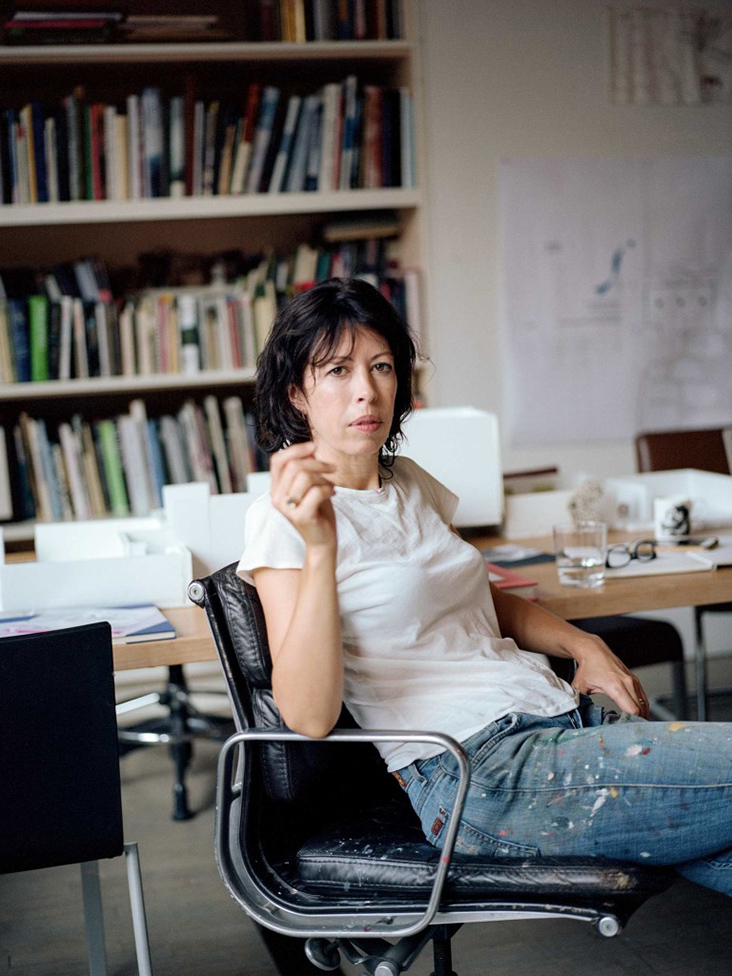
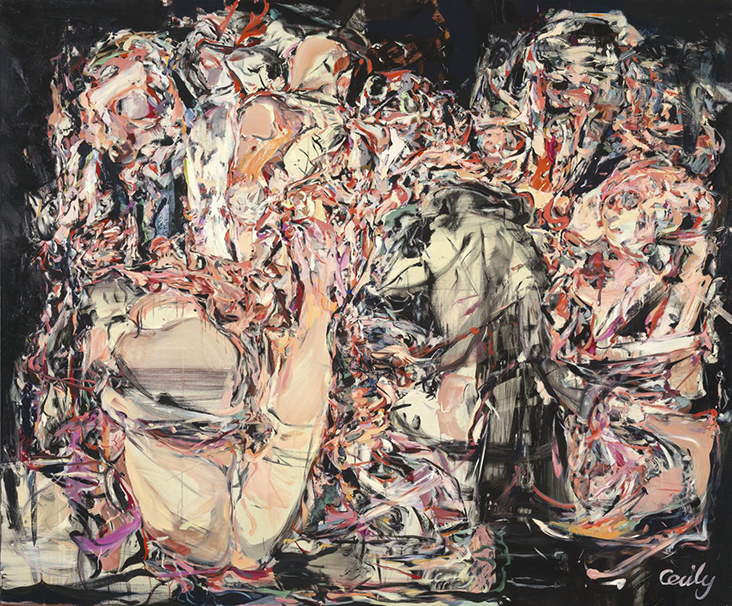
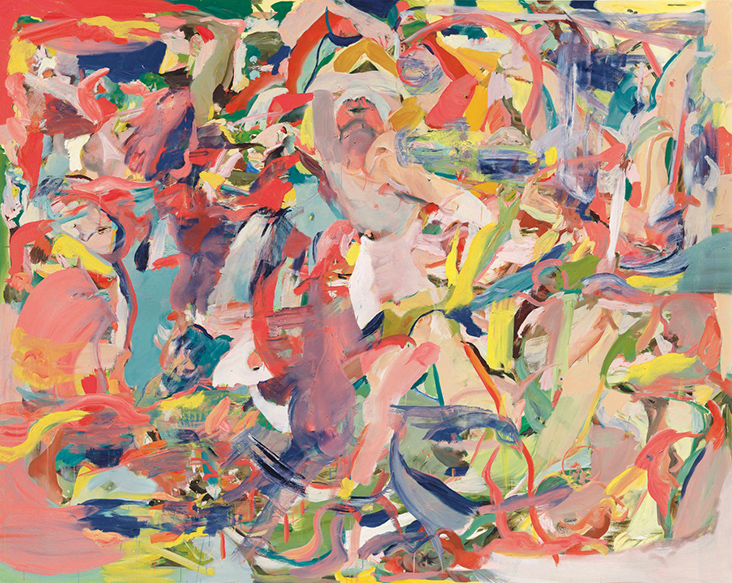
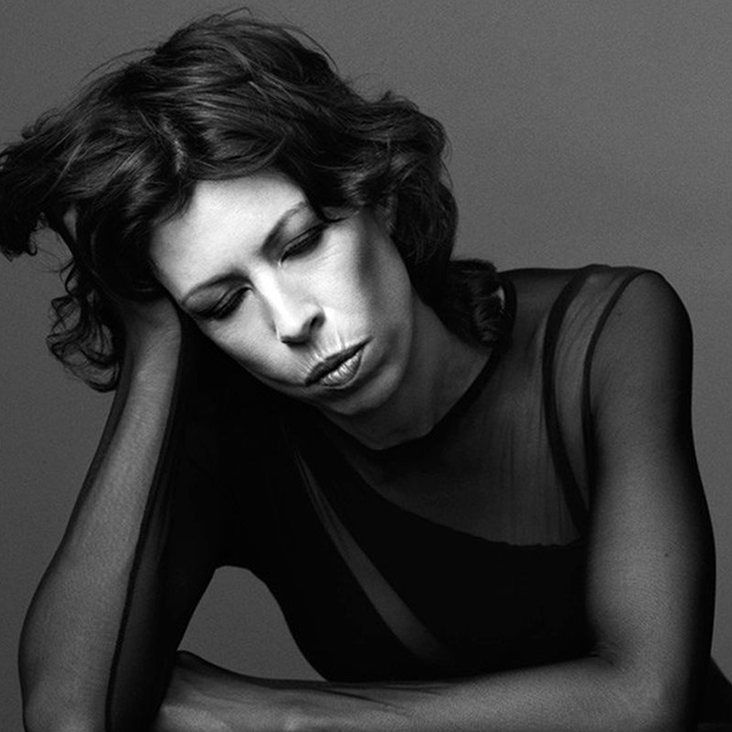
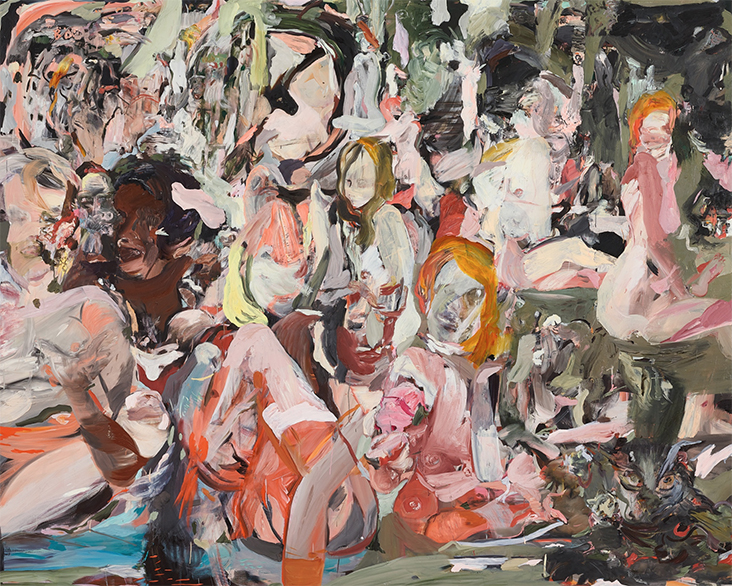
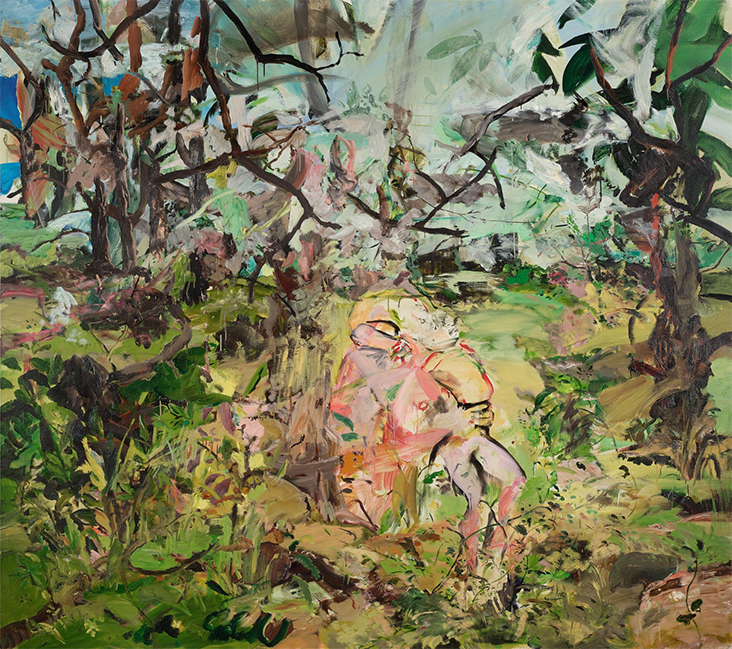
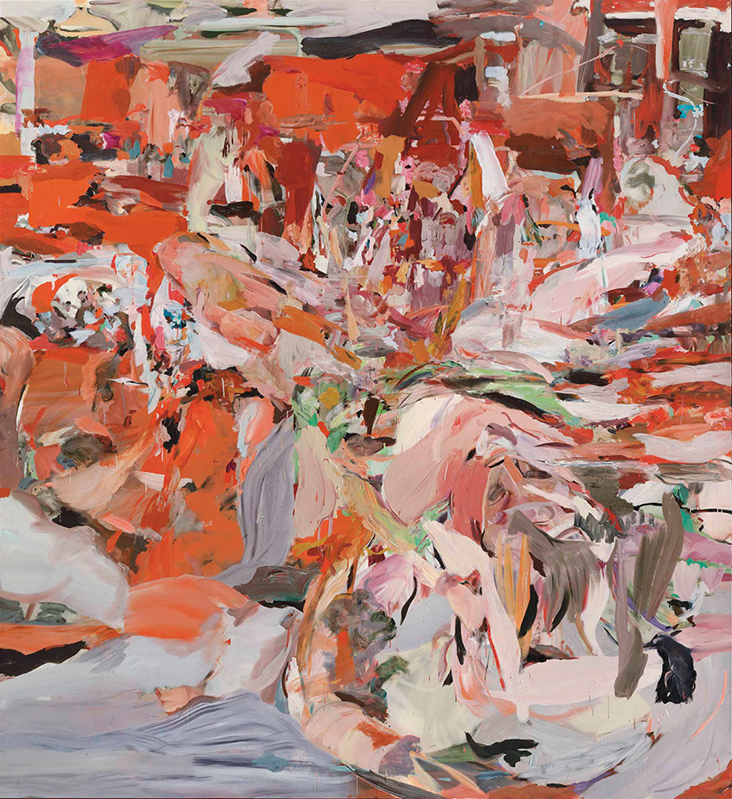
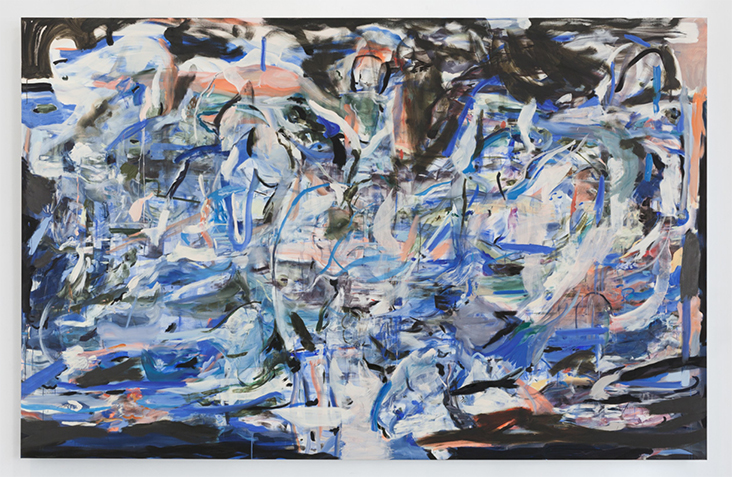
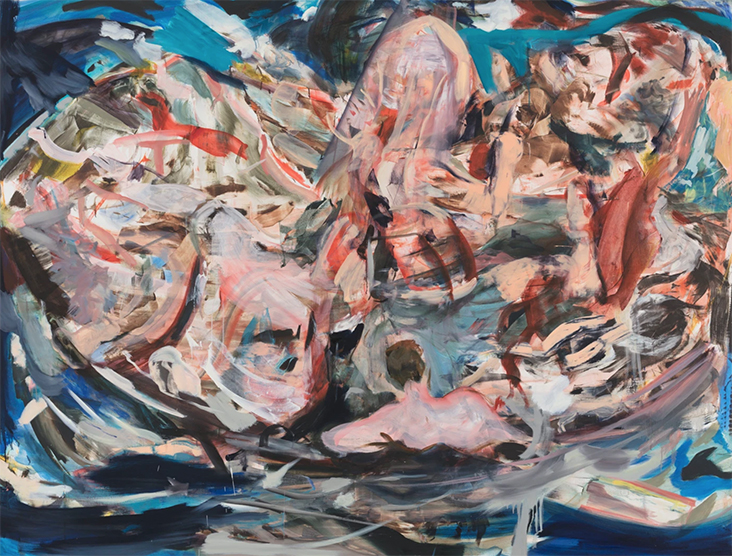

















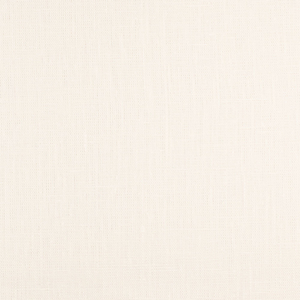



















One Comment
Vicki Lang
Another wonderful article about a fiery artist. Her paints are full of feeling with her bold brush strokes. Thank you for the info.